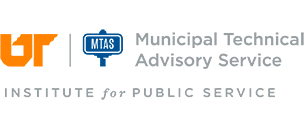Develop an Infiltration/Inflow Correction Plan
What Problem Are You Trying to Solve?
Not every problem has a cost-effective solution, so the following should be considered:
- Is there environmental damage? Are there health problems? Are regulatory agencies pressuring the utility to solve its I/I problems?
- Are you trying to eliminate lift station overflows or excessive pumping costs?
- Are you trying to reduce treatment costs?
- Are you trying to solve a specific problem — solids washout of the treatment plant, a backup in Mr. Smith's basement?
- Are you trying to reduce potential regulatory or legal liability?
Develop an I/I Correction Plan
Once you have defined your goals, collected data to locate the worst I/I problems, and ruled out other causes of high flows, you are ready to plan corrective actions. Assess the time, equipment, and expertise available in-house. If your staff lacks the necessary resources to identify, analyze, and correct I/I problems, it is time to engage consultants and contractors.
If in-house resources can be used, consider these guidelines:
- Assess Geology and Topography: Determine whether the sewer lines are below the groundwater table.
- Below groundwater table: Use nighttime flow isolation, televising, and flow monitoring.
- Above groundwater table: Use smoke testing, rainfall simulation, dye testing, and flow monitoring.
- Inspect Manholes: Physical inspections are critical, as manholes—especially brick structures and those located in depressions, near streams, or in areas with sheet runoff—are common sources of I/I.
- Focus on Interceptors: Large sewers near creeks often carry more I/I per inch than smaller lines. Many experts recommend rehabilitating pipes starting near the treatment plant and moving upstream, rather than beginning at dead ends.
- Evaluate Magnitude and Costs: Determine the scale of the problem and the resources needed. Should the municipality invest heavily all at once, or implement a phased approach? Clearly define the purpose of the I/I reduction program.
- Once the immediate I/I issues are addressed, MTAS strongly recommends budgeting annually for collection system maintenance. The goal is to strengthen the system and minimize future I/I problems.
Rehabilitate the System
Use in-house staff and/or outside expertise to correct identified problems. Until operators gain experience with repair techniques, contractors may be required for many rehabilitation tasks. Common methods include:
- Point repairs
- Cured-in-place pipe lining (CIPP)
- Grouting
- Manhole liners, coatings, and specialty seals
- Pipe bursting
- Root control
- Full line replacement
Experience shows that groundwater can migrate along the outside of sewer pipes, sometimes over long distances. Because of this, it is recommended to start rehabilitation work in the lower portions of the system. When repairing or replacing a section of pipe, renew all mains, taps, and service lines to a level above the groundwater. Where possible, install groundwater dams along pipes—especially PVC—to reduce migration.
A well-planned rehabilitation program should reduce I/I in the renewed area by approximately 50 percent. Keep in mind that if the work is successful, some I/I may reappear at other locations in the system.
For both rehabilitation and new construction projects, 100 percent inspection is recommended to ensure effectiveness.
